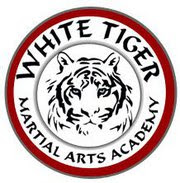
........ WHITE TIGER MARTIAL ARTS CROYDON ........ SHIRO TORA BUDO KAI ........ South Croydon ........ – Weapons training – Unarmed Combat – Grappling – Kickboxing : Traditional and Contemporary Martial Arts : Practical, Realistic and Effective Street Self Defence : Get a great workout – Learn something – Have Fun! ....... : HIT HARD – HIT FAST – HIT FIRST! : If you want to learn to fight – come to see us!
Monday, 8 July 2019
Koto Ryu Koppo Jutsu
Koto Ryu (Tiger knocking down School)
"to knock the Tiger down with the tips of the fingers"
KO - Tiger
TO - Sword
Tiger Sword School
Koppo Jutsu
Not unlike kyukushin karate this method involves linear strikes to break bones - aggressive, linear attacks using the larger bones to strike the weaker ones of your opponent
First Rule - hit fucking hard
This ryu adopts training methods seen in Okinawa and later in Japan in kyukushin - wood breaking to perfect the bone breaking methods - striking sand and gravel, then later stone to condition the hands and other striking tools
The 10th Soke of Gyokko Ryu founded the Koto Ryu
This ryu also teaches sword, and uses the four point shaken shuriken
A school of koppojutsu, (骨法術) , shurikenjutsu, and kenjutsu
Koto Ryu koppojutsu began with Toda Sakyo Isshinsai during the Tenmon Era (1532 - 1550) after learning Gyokko Ryu shitojutsu. It is a sister art of "Gyokko Ryu" kosshijutsu (玉虎流骨指術). Toda taught both of these arts and they were handed down within Iga Ryu until reaching Soke Toda Tokugawa period.
The foundation of "Togakure Ryu" ninpo comes from the unarmed combative movements of Koto Ryu and Gyokko Ryu.
It can be translated as "Knocking down the Tiger" School, which is an image shared with its sister school, Gyokko Ryu, the "Jeweled Tiger School".
In addition Koto Ryu includes a 4 pointed "Hira Shuriken" or "Shaken" along with blade fighting.
In Koto ryu there are about 50 katas divided into four levels: Shoden, Chuden, Okuden and Hekito levels.
The first and most basic level is Shoden, which includes 18 Katas.
The second level is Chuden, and includes 12 katas.
Third level is the Okuden and it has 12 katas
Fourth and last level is Hekito and it includes 8 Muto dori katas of empty hands versus a sword.
The main characteristic in this koryu is breaking the opponent's movement and posture. This strategy stems from being a Koppo jutsu system. Two advantages are gained by Tori – the first, disabling the opponent's attacking abilities and the second is the creation of an entrance into the opponent's weak points and posture.
Koto ryu katas are short; they do not include many movements. The source of the Koto ryu Kata is real combat situation and the solution to the problems in it. Because of this, the katas are very focused and revolve around specific techniques that relay a specific and short tactic. The use gravitates toward very simple punches, basic locks and no complicated transitions between throws and locks.
Kata in Koto Ryu look at situations that have maintained their relevance till this day. Most of them are 'street situations' and the scenarios are familiar:
1.Opponent grabbing with one hand
2.Opponent grabs the lapel with one hand and attacks with the other hand: Shato, Hoteki and Shito.
3.Opponent grabs or tries to grab with both hands: Saku geki, Keto, Oh gyaku, Yokuto, Ran Setsu, Kimon, Soto, Shisen and Santo.
4.Opponent attacks with one punch: Kompi, Hida and Koyoku.
5.Opponent attacks with two successive punches: Kata maki, Ura nami, Kyogi, Kako, Shihaku, Tan geki, Hosoku, Suito.
Some of the Kata are very aggressive; Tori initiates the attack in these Kata during or after walking toward the opponent
